Film Inquiry Recommends: Non-Kurosawa Samurai Films
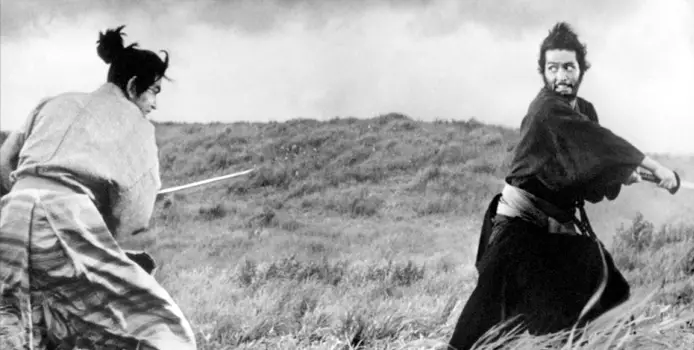
Alex is a 28 year-old West Australian who has a…
Over at our official Facebook page, we are currently posting daily film recommendations, with each week being a different theme. This is a collection of those recommendations! This week’s theme is Non-Kurosawa Samurai films. Whilst we can safely say that Akira Kurosawa, the Japanese director behind samurai classics such as Seven Samurai, Rashomon and Throne of Blood, is the king of chambara (Samurai) cinema, there’s some other directors we wanted to recognise.
1. Sword of Doom (1966, Kihachi Okamoto)
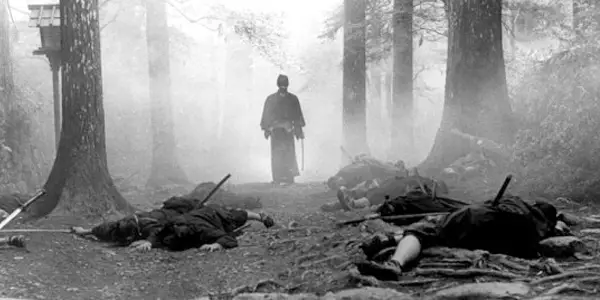
Sword of Doom is a film based on the historical novel of the same name by author Kaizan Nakazato, which was a 41-volume series which encompassed 1,533 chapters, one of the longest series in Japanese history. Because of this, the film was originally planned as a trilogy, so many plot lines in the film are left unresolved which makes them feel pointless and arbitrary. Sword of Doom is about Ryunosuke Tsukue, an emotionless but skilled samurai, who slowly drifts through life making a living doing various jobs which always involve murder and violence.
Even with the large amount of bloodshed, Tsukue’s emotions never shift, delivering violence with a steel gaze. Even though most of the plot is unresolved, the character arc of Tsukue is a fulfilling one and quite an interesting downward spiral. Sword of Doom is much deeper than most serialised samurai films, with Sword of Doom examining the effects of violence and the rippling effect, both physically and emotionally, it causes to everyone involved. The climactic fight scene (a full 7 minutes of pure sword action) is one of the best samurai fight scenes put to screen, due to its high body count and erratic shooting style.
2. 13 Assassins (2010, Takashi Miike)
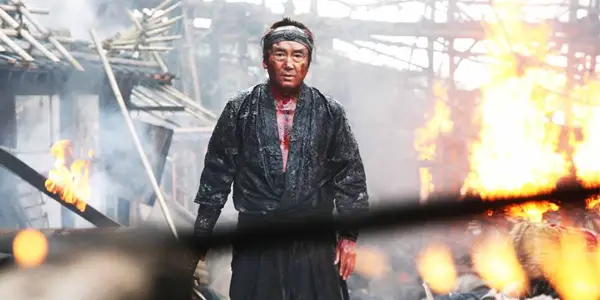
One of the 2 of Takashi Miike’s remakes of classic Japanese films (the other being Hara-Kiri), 13 Assassins is a film firmly on the list of one of the best remakes of all time. Adapted from Eiichi Kudô’s 1963 black and white samurai film, 13 Assassins tells the tale of an assorted group of 13 samurai who band together in a large scale suicide mission to stop an evil warlord during one of his journeys. The samurai’s plan is to lock the warlord and his large army within one structured town and take them out slaughter-style, with the help of an assortment of traps and classic samurai sword-play.
What makes this film so entertaining is that the first half really takes time to establish its world and characters, really positioning the audience to understand why the characters are doing what they’re doing and why the warlord must be stopped. Taking a lot of cues from Kurosawa’s Seven Samurai (but you have to think, which samurai films released after it doesn’t borrow from it?) the film’s descent into full-on gory action is a delight to see, as Miike is an established director of great action and knows how to stage large scale battle scenes which also feel very personal. Whilst Miike’s large volume of films can be very hit and miss, this film is one of his best.
3. Lone Wolf and Cub: Sword of Vengeance (1972, Kenji Musimi)
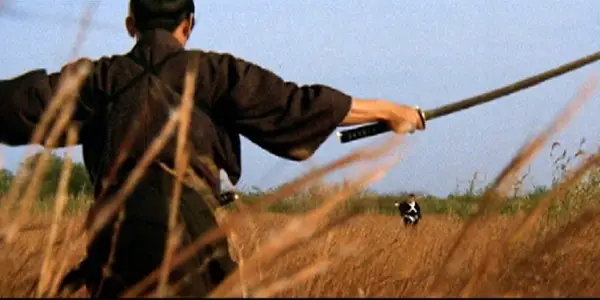
Lone Wolf and Cub is a manga series which lasted for 6 years, which chronicled the story of Ogami Ittō and his infant son, who wander the country, hiring themselves to whoever needs them. Ogami Ittō was once a high ranking executioner for his home’s shogun, framed for murder and his wife killed by a rival who wanted his job, Ogami Ittō is now out to help others in need and track down the group that ruined his life. Sword of Vengeance, the first film, tells this origin story, which lead to another 5 films which were a lot more serialised, telling various stories of Ittō and his child entangled in different cases, without any real overarching arc.
Lone Wolf and Cub is infamous due to its UK and US initial release, which was the second film, with several flashback segments from the first, combined into one film named Shogun Assassin. Due to the film’s trademark nature of over-the-top cartoonish gory violence (embracing its comic origins), it was one of the film’s banned in the UK under the Video Nasties list, which made people want to seek it out more during the 1980’s. The film works due to its successful translation of the original manga, which manages to not lose any elements which worked in the books, whilst using the cinematic tools at its disposal to really add to the violence and themes established originally. The film has some really creative kills and an overall energy which really propels the film. It is much more fun and energetic than other samurai films which are usually more thematically heavy and take themselves a lot more seriously.
4. Hara-Kiri (1962, Masaki Kobayashi)

Masaki Kobayashi was one of Japan’s great directors who had an impressive filmography that is sadly hard to find these days. His biggest and best films include Hara-Kiri, The Human Condition Trilogy, Kwaidan and Samurai Rebellion, with each of these titles gaining their own Criterion Collection releases but the rest of his filmography becoming quite rare to find. His films always featured an undercurrent theme of deconstructing the established code, with Kobayashi being an outright opposer to the outdated traditions in society and how archaic these traditions feel in a changing modern society. Hara-Kiri is his most famous example of this, with the film acting as a deconstruction of samurai/ronin values and what the real meaning of ‘honour’ means, its clash between what is presented to people compared to how we actually act when not in the spotlight.
Hara-Kiri is about Tsugumo Hanshirō, a masterless ronin who goes to the Ii clan in order to commit seppukku (suicide). When the Li Clan tries to persuade him not to do it by telling him a tragic story of a previous samurai who wanted to commit seppukku, Hanshirō has a story of his own to tell. The film’s seamless interweaving between the present and flashback is masterfully done, with the tension and plot building slow enough which makes for an extremely charged climax which is unforgettable and really drives Masaki’s overall themes. Hara-Kiri is one of the best samurai films of all time, a film which really takes its time and doesn’t focus on the violence, but what it means to be a samurai, how we value honour (especially in Japanese culture) and dealing with our past.
5. Zatoichi (2003, Takeshi Kitano)
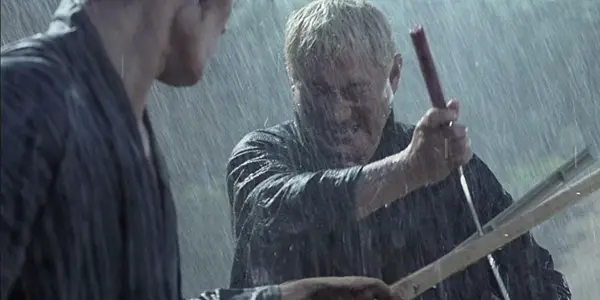
Written, directed and starring the very talented Takeshi Kitano, Zatoichi is a remake of a famous series of movies and a television show. Zatoichi was a serialised franchise of films, with each film being very similar to the serialised western films of the time, where the mysterious badass travels to different towns, finds a problem, solves it and moves on. It’s a very basic and traditional story-telling method, but can be effective if the individual story is interesting. Kitano makes the smart decision of just because this film is a remake, does not mean its a origin story. Kitano knows the audience is aware of the character, if not, he gives him enough character and beats to make sure we can still watch the film on its own without knowing its history.
Zatoichi tells the story of the blind swordsman Zatoichi (played by Kitano) who enters a town with 2 warring factions (another staple of the traditional American storytelling outline) and is asked to avenge the death of the parents of 2 geishas. Things get much deeper and much like Kitano’s other films, the slow burn leads to a lot of bloodshed and sudden large bursts of violence amongst usually peaceful settings. Zatoichi is probably one of Kitano’s most mainstream and accessible films, even though the violence is bloody, it’s quick and doesn’t focus on the cruelty or suffering of it and avoids some of the darker existential themes that usually surface in Kitano’s other violent yakuza films.
6. Samurai Assassin (1965, Kihachi Okamoto)
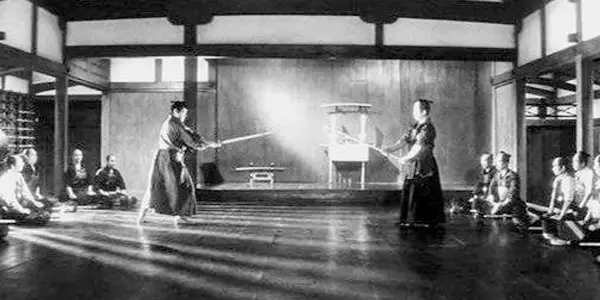
Between this film, Sword of Doom, Kill! and Zatoichi Meets Yojimbo, Kihachi Okamoto is one of the best and most important directors when it comes to chambara (Samurai Cinema). Samurai Assassin is one his more ambitious efforts, a slow burner with a complex plot that takes a while to pick up steam. The film balances a traditional samurai action film with a more intelligent side seen in such films as Hara-Kiri and Samurai Spy.
Samurai Assassin is about Tsuruchiyo Niiro (played by Toshiro Mifune, king of samurai cinema) a samurai who joins a group of rebels who want to kill a an official who wants to open Japan’s borders to foreigners. As the plan is put together, the group starts to suspect a traitor in the mix and the fingers start to get pointed at Niiro. The second half of the film ramps up the action, featuring some of the best sword action of the 1960’s, especially the final scene in the snow. The only problem with Assassin is its hefty length, which feels like it could’ve been more tightly edited.
7. Ghost Dog: The Way of the Samurai (1999, Jim Jarmusch)
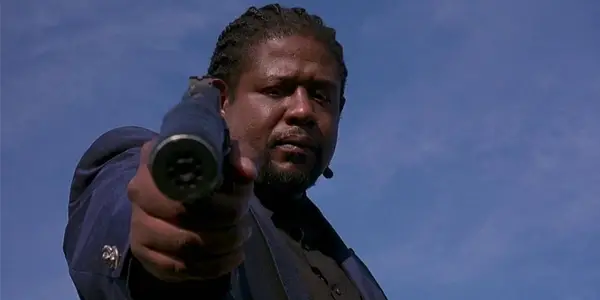
Probably Jim Jarmusch’s most accessible film, Ghost Dog is a great mafia film, infusing philosophy, Japanese cinema and American gangster cinema into a smart, entertaining package. Ghost Dog is about the title named gangster, portrayed by Forest Whittaker (in one of his better roles), a lonely man who lives by the code of the samurai.He lives on a roof with his carrier pigeons, his only interactions are with his single friend, a french ice-cream man who don’t understand each others languages, but still share a close bond. When Ghost Dog is asked to assassinate a made man, a female witness at the scene of the crime means secrets will leak out thus Ghost Dog must be killed.
It is an old school ‘gifted assassin vs the mafia’ film and Jarmusch only uses it as a framing to explore more interesting elements, such as Ghost Dog’s every day life and the older machinations of the old school mafia guys transitioning to the modern day. The head of the mafia, Ray Vargo, played by Eurocrime favourite Henry Silva, is an interesting character, a cartoon obsessed man constantly scowling, never really letting anyone, including the audience, know what he’s really thinking. Jarmusch’s chilled style really works here, mixed with RZA’s score, means that whilst the plot does move slowly, watching Ghost Dog interact with society around him and swiftly dealing with his problems rather than dwelling on them makes this a really great film.
What are some more great Samurai films which weren’t directed by Akira Kurosawa?
(top image: Hara-Kiri – source: Shochiku)
Does content like this matter to you?
Become a Member and support film journalism. Unlock access to all of Film Inquiry`s great articles. Join a community of like-minded readers who are passionate about cinema - get access to our private members Network, give back to independent filmmakers, and more.













